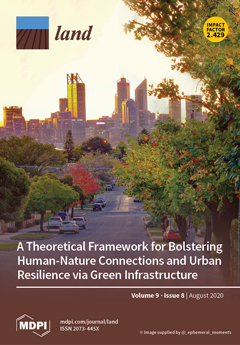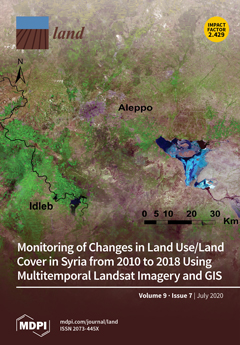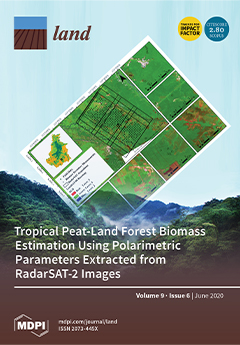Over the last few decades, Sicily has faced both erosion-related difficulties and limited Integrated Coastal Zone Management (ICZM). In particular, a lack of synergy between regional bodies, an absence of information exchange between scientific and administrative communities, the application of…
Introduced as a soil erosion deterrent, salt cedar has become a menace along riverbeds in the desert southwest. Salt cedar replaces native species, permanently altering the structure, composition, function, and natural processes of the landscape. Remote sensing technologies have the potential to…
The design of efficient Green Infrastructure —GI— systems is a key issue to achieve sustainable development city planning goals in the twenty-first century. This study’s main contribution is the identification of potential GI elements to better align the environmental, social and economic…
The process of population concentration in cities is a worldwide phenomenon—not yet finished—which has led to a widespread rural exodus and abandonment of rural areas. In Spain it occurred very abruptly from 1960, leaving numerous population centers abandoned in the northern half of the country…
Cultural ecosystem services are gaining increasing attention in the scientific literature, despite the conceptual and methodological difficulties associated with their assessment. We used a participatory GIS method to map and assess three cultural ecosystem services, namely, (a) outdoor…
Cover crops (CCs) minimize the loss of soil in permanent cropping systems where the soil is usually bare due to intense tillage or overuse of herbicides. The topsoil, the richer layer in soil organic carbon and organic matter (OM), is affected by water erosion. Nature-based solutions appear as a…
The population of a considerable number of rural areas in the interior of Spain is in decline. Faced with this problem, various institutions are launching initiatives to enhance the territorial heritage (natural and cultural) of these areas and, starting with a minimum of economic…
Sustainable Rural Development is essential to maintain active local communities and avoid depopulation and degradation of rural areas. Proper assessment of development in these territories is necessary to improve decision-making and to inform public policy, while ensuring biodiversity…
Environmental activism, with decades of relevant presence already, is a fundamental element for the preservation of natural and cultural values. Theories around their bases, protagonists, methods, instruments and results proliferate in a period of obliged ecological transition. Here, we present…
In the early 1990s, with the Leader Initiative, the European Commission intended to apply a new development model in order to encourage the economic diversification of the rural world. The expectations raised by the first Leader Initiative motivated Spain to approve the Proder Program to allow…
Discussions on food security in the Global North have raised questions about the capacity of peri-urban organic agriculture to provide sufficient healthy food for the urban market. Dealing with food security requires more attention to how to protect peri-urban organic farming systems from urban…
The Montado in Portugal and Dehesa in Spain is a unique agro-silvo-pastoral system designed to overcome food needs in a scarce resource’s environment. The system competitiveness is not clear and it is now under severe threats, caused by extensification or abandonment of less fertile areas and by…







